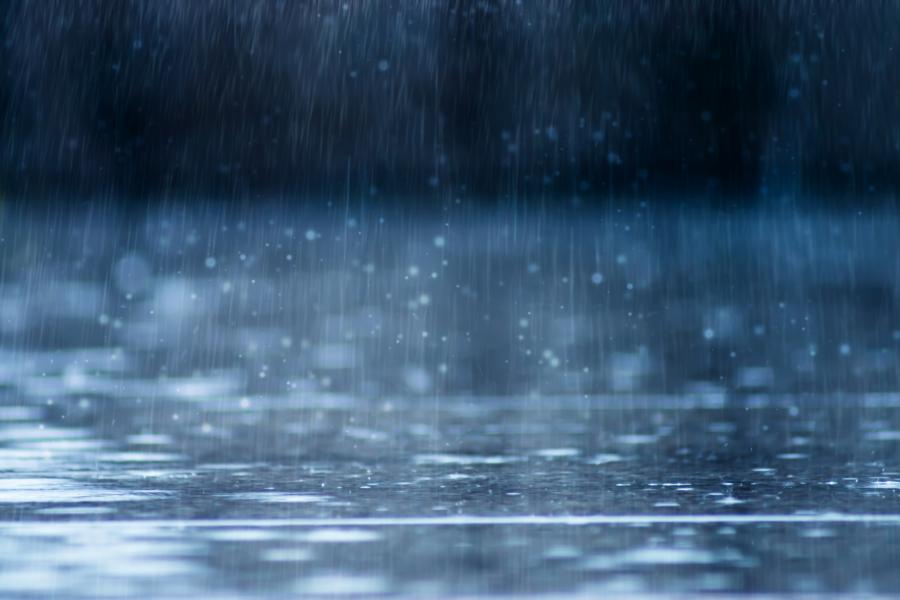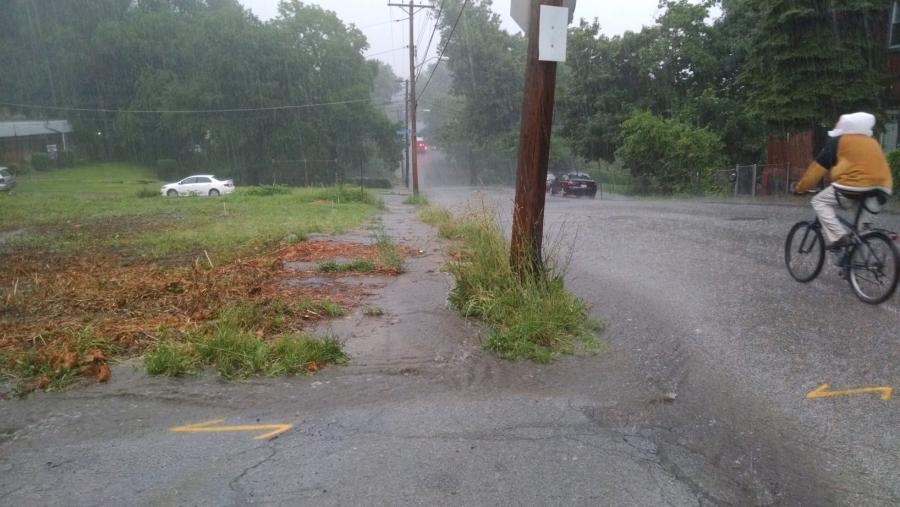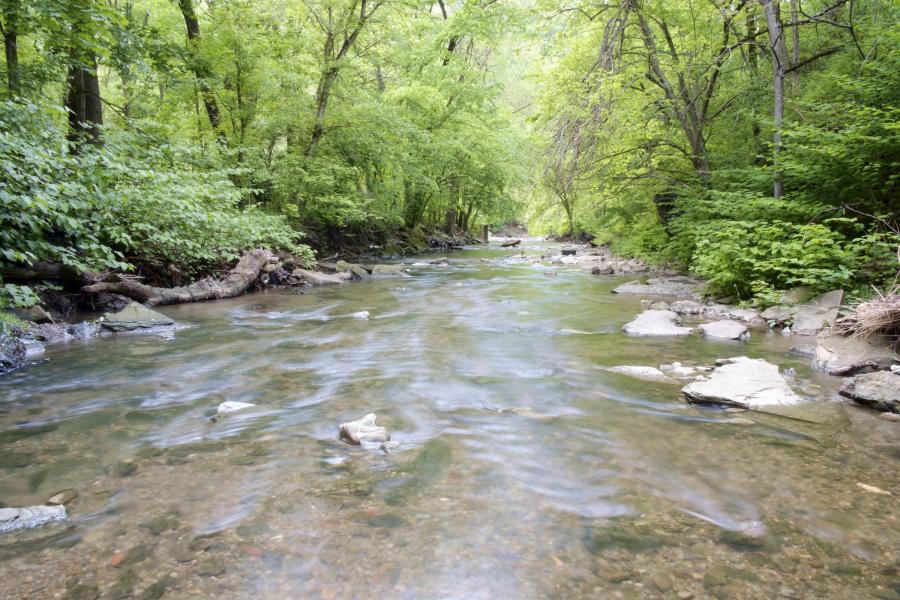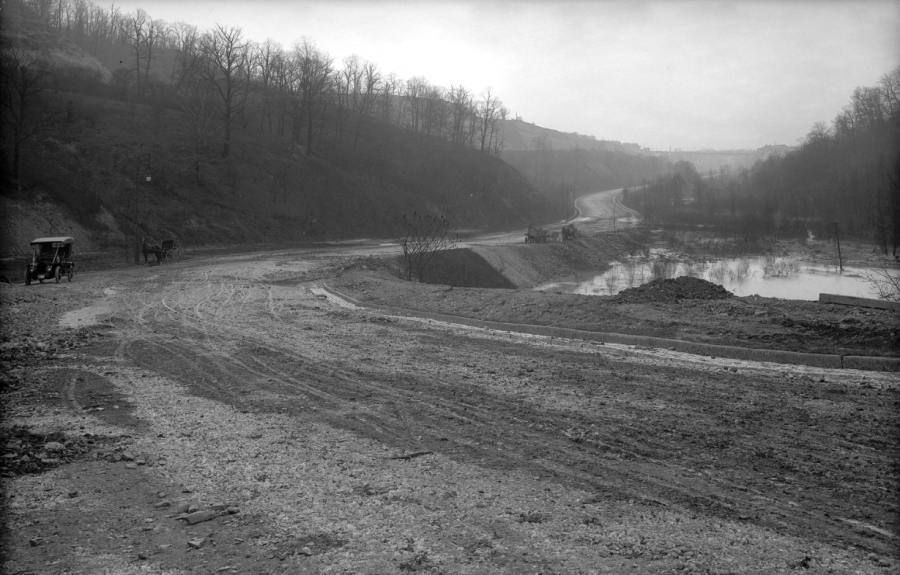
As heavier and more intense rains are overwhelming our sewer system, stormwater management is a growing concern throughout Pittsburgh. With each heavy rain, sewage overflows into rivers and streams, floods our streets, and backs up into basements. To solve the problem of too much stormwater, we are taking a more deliberate approach about the way it is managed across Pittsburgh.
In 2004 the Pennsylvania Department of Environmental Protection (DEP) issued a consent order to the City of Pittsburgh and other municipalities in Allegheny County. The order directs us to meet the requirements of the Pennsylvania Clean Streams Law of 1937 and the Federal Clean Water Act. We must meet state and federal mandates to reduce the volume of combined sewer overflows and basement backups. This is a serious public health issue that impacts water quality and the health and safety of our residents.
To reduce the amount of water entering the combined sewer system, we are distributing the collection of rainwater into a series of stormwater infrastructure projects across the city. This distributed approach will help to capture, absorb, hold back, and slow the flow of stormwater. These methods use a combination of green and gray infrastructure and integrate into the natural environment. It is a cost-effective approach that will help to create safe, flood-prepared neighborhoods.
The following plans describe our approach to managing stormwater.
Our Plans
Stormwater Strategic Plan

We are pleased to announce the release of the final Stormwater Strategic Plan. Now complete, please visit www.pgh2o.com/swsp to learn more about its background, engagement process, and its recommendations.
Goals of the Strategic Plan
- Improve the quality of life for residents by creating a community that is healthier, safer, and more resilient to the impacts of stormwater.
- Develop cost-effective solutions to improve water quality, reduce street flooding and basement backups, and beautify neighborhoods.
- Establish guiding principles and the framework to establish a minimum level of storm protection to equitably protect Pittsburgh residents from local stormwater challenges.
- Identify short-term stormwater projects using an effective combination of green and grey infrastructure and climate data projections to plan for future projects.
- Recommend funding strategies and governance models to create a sustainable and more resilient city.
Schedule
- Project Initiation: June 2021
- Public Comment Period: December 16, 2022 - June 30. 2023
- Stormwater Conversations: From April through June 2023, PWSA held a series of community meetings to share the recommendations of the plan, gather community feedback, answer questions, and share next steps.
- Plan Finalized: December 2023
- Press Release Announcing Final Plan: (TBD)
- Plan Implementation: It will take time to implement needed solutions. From the time the plan was completed in December 2023 design and construction to implement its recommendations will take place over many years and funding will always be limited.
Wet Weather Plan
What is a Wet Weather Plan?
The historical development of the PWSA sewage system is primarily based on a combined sewage system, where sewage and stormwater flow through the same pipes. Today, during heavy rain or snow events, the pipes become overloaded and discharge the combined sewage and stormwater overflows into our waterways. PWSA is currently developing a Wet Weather Plan (WWP), which will provide a framework for how PWSA will address this important issue.
Learn more about the PWSA Wet Weather Plan
Saw Mill Run Integrated Watershed Management Plan

The Saw Mill Run Integrated Watershed Management Plan recognizes the need to manage stormwater across municipal boundaries. This multi-agency partnership includes the 12 municipalities within the Saw Mill Run Watershed, Watersheds of South Pittsburgh, Economic Development South, the Allegheny County Sanitary Authority (ALCOSAN), and the U.S. Army Corps of Engineers.
Integrated watershed planning uses a combination of green and gray infrastructure to manage stormwater. It is potentially more cost-effective, and can result in additional economic, social, and environmental benefits. It also considers pollutant sources in the watershed to holistically address water quality challenges.
The Saw Mill Run Integrated Watershed Management Plan will establish a long-term strategy for investment in green stormwater infrastructure and create lasting community benefits that will reconnect people to the natural surroundings of the stream.
Through this collaboration, municipalities can leverage funds and invest in capital projects that will improve water quality and provide additional benefits for those living and working in the Saw Mill Run communities.
Negley Run Planning

Major rainfall events regularly lead to flash flooding conditions along lower Washington Boulevard, which is a key transportation roadway and has a high volume of commuter traffic. Due to this flooding, PWSA and the United States Army Corps of Engineers (USACE) Pittsburgh District have partnered through the USACE Section 219 program to develop engineering plans to divert stormwater runoff from the existing combined sewer system. This planning area is also prioritized by the City of Pittsburgh for public safety improvements to reduce risks of roadway flooding.
Located within Highland Park, Washington Boulevard runs along a historic stream valley named Negley Run. This area has been significantly impacted during the development of the Pittsburgh region. The Negley Run valley receives a large drainage area of the East End of the City including the Homewood, Larimer, and Lincoln-Lemington-Belmar neighborhoods. It receives more stormwater runoff than any other drainage area in the City, which can overwhelm the capacity of the existing PWSA sewer system. Improvements proposed for the Washington Boulevard corridor are also intended to coordinate with the development of long term watershed goals for stormwater and sewer system improvements in the surrounding neighborhoods.
In addition to PWSA and USACE, several other government agencies have participated in this planning development to improve the Negley Run valley, including the City of Pittsburgh Department of Public Works, the Pennsylvania Department of Transportation (PennDOT), and the Allegheny County Sanitary Authority (ALCOSAN). These efforts of continued partnership will allow PWSA to coordinate investment of stormwater improvements with any other opportunities that best reflect the priority to improve public safety in this area.
Citywide Green First Plan
In 2016, the City of Pittsburgh and the Pittsburgh Water and Sewer Authority developed the Citywide Green First Plan. It outlines how Pittsburgh intends to use cost-effective green infrastructure solutions to manage stormwater. Implementing the plan will reduce local street flooding and sewer backups caused by large rainstorms. These innovative practices will also help Pittsburgh and the region comply with the U.S. Environmental Protection Agency (EPA) combined sewer overflow mandates and improve the quality of local waterways.
The Public Summary and Executive Summary provide an easy to understand overview of the Citywide Green First Plan. A full version of the plan is also available for download or you can explore the chapters that are most interesting to you.
Full Plan Table of Contents
2. Establish Target Green Infrastructure Management Level Goals
3. Green Infrastructure Modeling Approach Using GIS and SWMM
4. Flood Hazard Mitigation Analysis
5. Stream Inflow Improvements Analysis
6. Urban Planning and Green Infrastructure
6.1. Green First Approach and Process
6.2. M-29 Four Mile Run
6.3. A-42 Washington Boulevard and Negley Run
6.4. M-16 South Side/South 21st Street
6.5. A-41 Heth's Run
6.6. M-19 Soho Run
6.7. O-27 Woods Run
6.8 Review: Integrated GI Approach and Meeting the Guiding Principles
PWSA Wet Weather Feasibility Study, Executive Summary
In July 2013, the Pittsburgh Water and Sewer Authority submitted its Wet Weather Feasibility Study to the Pennsylvania Department of Environmental Protection (DEP). This executive summary outlines the objectives of the study.
- Identify and present technology and cost analyses for determining combined sewer overflow control alternatives
- Establish the framework for the use of green stormwater technologies and integrated watershed planning
- Participate and cooperate with ALCOSAN in the development of their Wet Weather Plan
- Evaluate a range of alternatives to meet the requirements addressed in the consent order
Greening the Pittsburgh Wet Weather Plan
In 2013, the Pittsburgh Water and Sewer Authority hosted a series of workshops to begin a discussion about the use of green infrastructure to manage stormwater. These workshops were attended by representatives from the public, private and non-profit sectors with the primary objective to develop a consensus approach to reviewing, recommending and incorporating a plan for the implementation of green stormwater technologies and policies into stormwater management planning for Pittsburgh.
The discussion recognized a need to identify appropriate leadership and partnerships to move these concepts forward, establishing a stormwater authority for the City of Pittsburgh, and to initiate a community-based education and engagement campaign. It also began setting the stage for the creation of our Citywide Green First Plan and the Saw Mill Run Integrated Watershed Management Plan.
